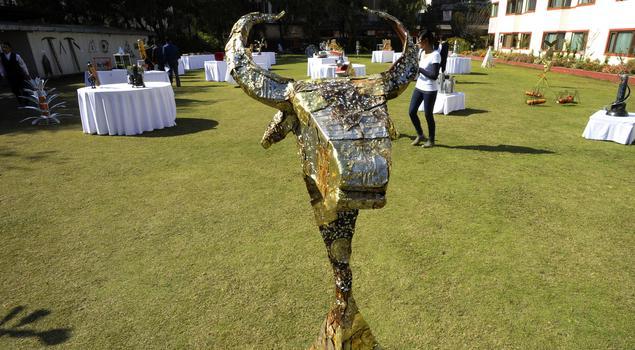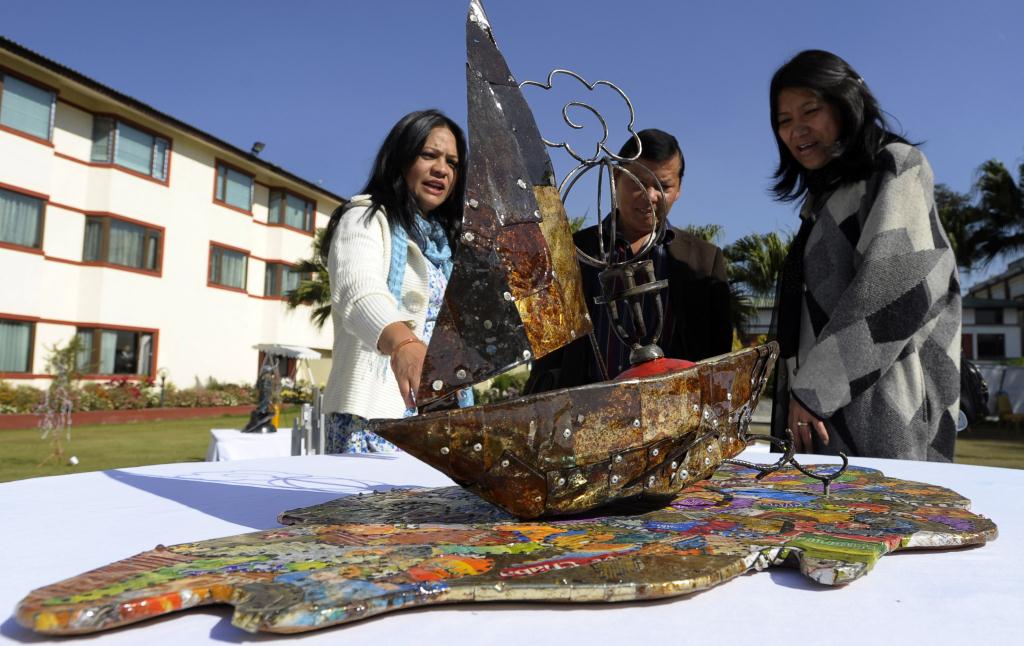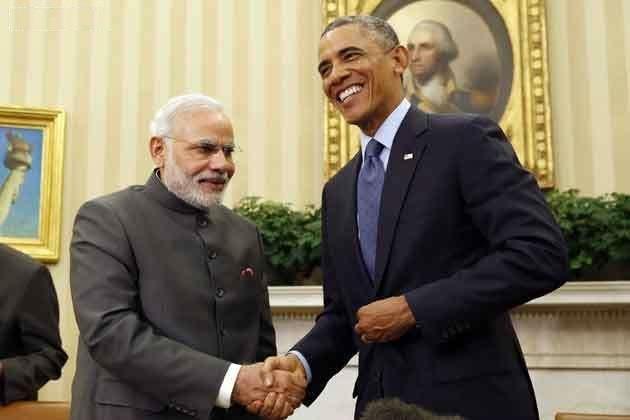November 22, 2012
Artists in Nepal have made pieces of art out of eight tons of trash collected from Mount Everest. The exhibition is currently on display in a hotel in Kathmandu and will move it Pokhara next week.

Visitors look at art made from trash collected on Mount Everest, in Kathmandu.
November 22, 2012
Artists in Nepal have made pieces of art out of eight tons of trash collected from Mount Everest. The exhibition is currently on display in a hotel in Kathmandu and will move it Pokhara next week.

Visitors look at art made from trash collected on Mount Everest, in Kathmandu.
A group of artists is staging an exhibition of sculptures made from tons of trash collected on Mount Everest, highlighting the toll that decades of mountaineering have taken on the world's highest peak.
Discarded oxygen and cooking gas cylinders, ropes, tents, glasses, beer cans, plastic and even the remains of a helicopter make up 75 artworks commissioned for the "Everest 8848 Art Project" on display in Kathmandu.
"We thought that this would help promote the artists as well as contribute to making Everest clean. We were happy to get the trash and they were happy to get rid of it," said Kripa Rana Shahi, whose company is behind the show.
Sixty-five porters put together by the Kathmandu-based Everest Summiteers Association (ESA) and 75 yaks amassed a total of eight tons of trash, which they carried down from the mountain over two Spring season expeditions.
Fifteen Nepalese artists then spent a month in workshops preparing pieces for the exhibition, which has begun in a luxury hotel in Kathmandu and will move to the tourist hub of Pokhara in central Nepal next week.
In one of the works by painter and poet Sunita Rana, white shards of aluminum from drinks cans are fashioned into medals signifying the bravery of mountaineers which are suspended from black metal tent poles to create a wind chime.
In another, remains of a helicopter which crashed in 1974 at camp two while carrying food for Italian climbers are used for an idol of the Hindu God Ganesh.
The artworks range in price from 1,500 rupees ($17) to 200,000, and several pieces with a total worth around 500,000 rupees have been sold.

Around 4,000 people have climbed the 29,028-foot Himalayan peak, which straddles Nepal and China, since it was first conquered by Sir Edmund Hillary and Tenzing Norgay in 1953.
Environmental activists say Everest is littered with the detritus of past expeditions, including human waste and mountaineers' corpses, which do not decompose because of the extreme cold.
Climbers spend tens of thousands of dollars trying to reach the summit, but local sherpas complain that few pay much attention to the rubbish they leave behind.
Expeditions currently have to fork out a $4,000 deposit, which is refundable once they show they have brought back everything they took onto the mountain. But officials say the rules are difficult to implement.
"As the word on the garbage on Everest spread, it tarnished the image of our country. I was saddened when the foreigners talked about Everest as if it were a dumping site," said Everest Summiteers Association president Wongchu Sherpa.

As well as oxygen canisters, the 1.5 tons of detritus used for the exhibition includes food containers, ropes and backpacks dating back to the 1970s.
"We have recommended that if a climber is found littering the mountain, he or she should be banned for five years from climbing," Sherpa told AFP.
"In the past, we have conducted random checks and have asked climbers to collect the trash that he or she disposes of. We have also recommended creating a fund to collect $10 from every climber and use it for garbage collection."
The artists hope to raise enough cash to transport the works and have them installed in the Everest region itself as a reminder of the damage littering can do to the environment.
Courtesy: AFP







































































































